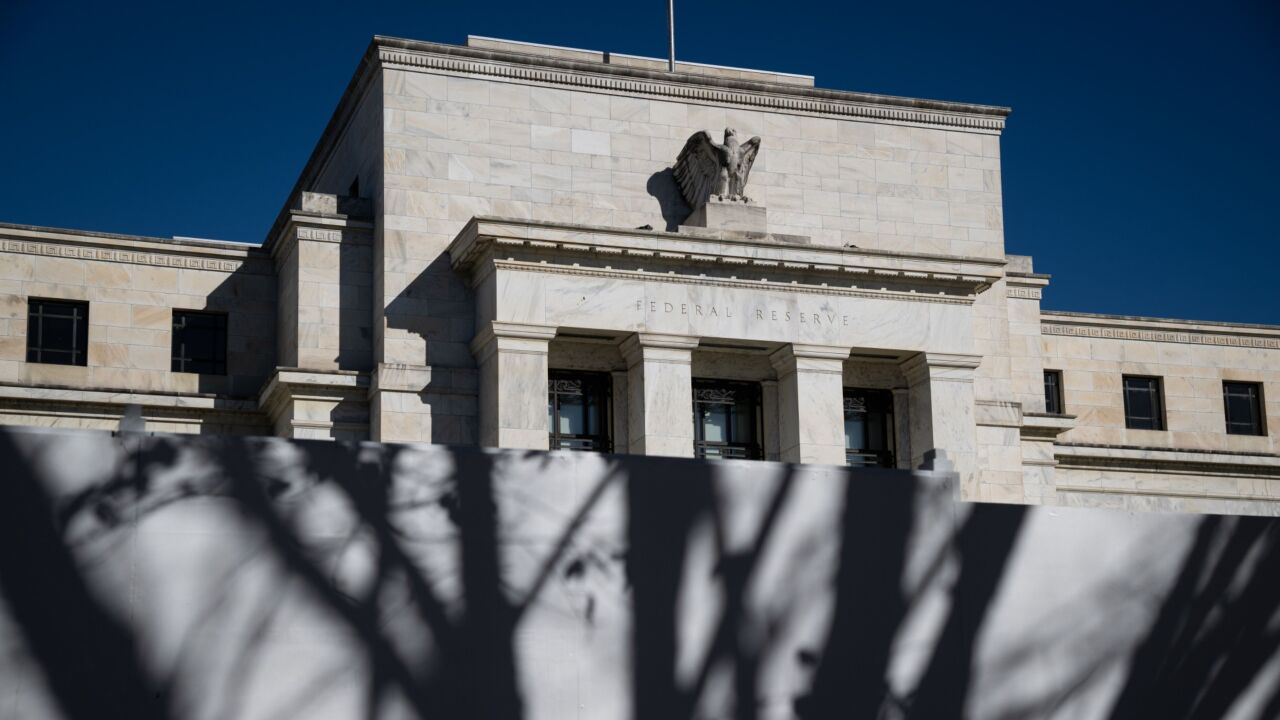-
Inflation cooled faster than expected last month, giving the Federal Reserve room to ease monetary policy if the economy weakens suddenly. But tariffs and other policy changes still cloud the outlook for monetary policy.
April 10 -
President Trump placed a 90-day pause on most of his sweeping tariff package, but for banks and other financial market participants, the threat of volatility remains.
April 9 -
Federal Reserve officials want to see how exactly new trade policies impact the U.S. economy before adjusting interest rates. Markets and monetarists have different ideas about what that might look like.
April 8 -
The central bank wants to let Trump's policies play out across the economy before deciding which way to move interest rates, and it's too soon to know what the impacts will be, the Federal Reserve chair said.
April 4 -
The Federal Reserve governor said it is healthy to examine the regulatory architecture, but stressed the importance of the central bank having insight into the banking system.
March 28 -
The personal consumption expenditures index showed headline inflation flat at 2.5%, but the details of the report explain the Federal Reserve's reluctance to adjust interest rates.
March 28 -
Get expert analysis of the May FOMC meeting, inflation outlook, and Powell's comments.
-
After the Federal Reserve moved to slow the pace of quantitative tightening, the Fed chair floated the idea of continuing to allow mortgage-backed securities to roll off its books even after the central bank has met its monetary policy objectives in reducing its balance sheet.
March 19 -
In a positive sign for the economy, headline inflation slowed in February. But the reading alone likely is not enough to break the Federal Open Market Committee out of its wait-and-see mode.
March 12 -
Federal Reserve Chair Jerome Powell emphasized the need for patience amid uncertainty over the Trump administration's policies, saying there would be no immediate rate changes but that the Fed would proceed carefully.
March 7









